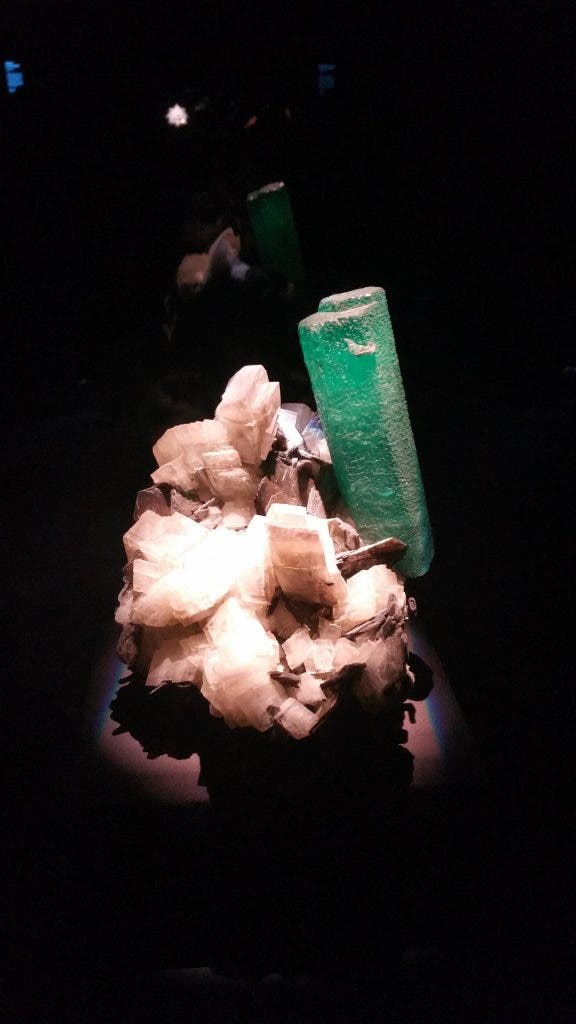The Houston Museum of Natural Science is one of the most impressive in the world, curating rare and indigenous wildlife from Texas, a huge sundial and one of the biggest paleontology halls. As expected in a city with some of the richest geologists in the world, we can also find here a large exhibit of over 750 crystallized mineral specimens and rare gemstones. Among these sits the “crown jewel”, a 1,869-carat natural emerald crystal, the largest ever discovered in North America.

Known as the “North American Emerald Mine” (NAEM), the elongated hexagonal emerald crystal was discovered in 2003. A carat should not be confused with its homophone, carrot. Though the ancients could have very well settled for baby carrots as a standard weight measurement, they decided that the carob seed (literally “small horn”) was the best way to measure tiny, precious items due to its unusually low mass variability. In 1907 at the Fourth General Conference on Weights and Measures, a carat was defined as being equivalent to 200mg (0.2 grams).
The crystal has a dark green color and a length of 19.5 cm. The crystal surface appears to be etched, and not smooth and brilliant like other emerald crystals. Apparently, this seems to be an uncanny feature present in most emeralds extracted from the same mine, as first described more than a century ago in “Gems in North Carolina” written by George Frederick Kunz, a famous American mineralogist.
“They appear,” he says, “as though filed across the prismatic faces. The basal plane is also often pitted with minute depressed hexagonal pyramids, that lie with their edges parallel to one another, and to the edge of the di-hexagonal prism. Rarely though crystals are found with perfectly smooth and brilliant faces. The emerald color is often focused on the surface and fades gradually to a colorless central core, which feature is of exceeding interest when the genesis of the mineral is considered. A similar etching or corrosion appears in beryls from Colorado, and those from Pala, California. A remarkable fact is that we have here a green beryl (emerald) and emerald green spodumene (hiddenite), and in the Pala, California, mine, we have lilac spodumene (kunzite) and pink beryls.”


